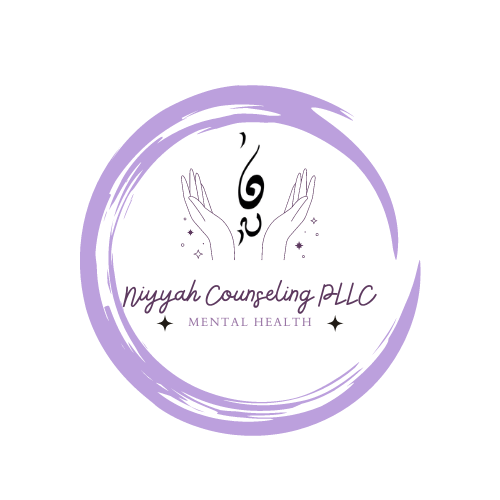Cultivating Safe Spaces for Every Identity in the Workplace
Cultivating Safe Spaces for Every Identity in the Workplace
In today’s interconnected and diverse world, workplaces are no longer just about tasks and deadlines—they’re about people. People of different races, abilities, genders, and sexualities contribute to an organization’s success, bringing unique perspectives and strengths. However, with this diversity comes the responsibility to cultivate an environment where everyone feels valued, respected, and safe.
A safe workplace isn’t just free of physical hazards—it’s free of discrimination, bias, and exclusion. Safe spaces empower employees to be their authentic selves, fostering collaboration, innovation, and a sense of belonging. Here are key strategies for cultivating safe spaces for every identity in the workplace.
1. Acknowledge and Embrace Diversity
The first step toward creating a safe workplace is recognizing the unique identities of your employees. Diversity isn’t just a buzzword; it’s the reality of a modern, dynamic workforce.
Why it matters:
When employees feel their identities are recognized and respected, they’re more likely to engage, contribute, and thrive.What to do:
Conduct regular training on cultural competence, unconscious bias, and inclusive practices.
Celebrate cultural, disability-focused, and LGBTQIA+ awareness events to show support for all communities.
2. Foster Inclusive Leadership
Inclusive leaders set the tone for the entire organization. They lead with empathy, curiosity, and a commitment to equity.
How leaders can foster inclusivity:
Actively listen to employees’ concerns and feedback.
Educate themselves about the challenges faced by underrepresented groups.
Model inclusive behaviors, such as using preferred pronouns and ensuring diverse representation in decision-making.
The impact:
Employees are more likely to feel safe when they see leadership taking proactive steps to create an equitable environment.
3. Establish Clear Anti-Discrimination Policies
Policies provide a foundation for addressing issues of discrimination, harassment, and bias. Without clear guidelines, employees may feel unsupported or unsure about how to address challenges.
Best practices for policies:
Clearly define what constitutes discrimination and harassment.
Outline reporting procedures that protect employees from retaliation.
Regularly review and update policies to address evolving social and legal landscapes.
Communication is key:
Ensure all employees are aware of these policies, understand their rights, and feel confident in the company’s commitment to upholding them.
4. Create Physical and Emotional Accessibility
For employees with disabilities, a truly safe workplace goes beyond compliance with legal standards—it embraces accessibility as a core value.
Examples of accessibility:
Ensure workspaces are physically accessible with ramps, elevators, and adaptive furniture.
Provide assistive technologies, such as screen readers or voice-to-text software.
Offer accommodations like flexible work hours for those managing chronic conditions.
Emotional accessibility:
Foster an environment where employees feel comfortable disclosing disabilities without fear of judgment or negative repercussions.
5. Support LGBTQIA+ Employees
Creating a safe space for LGBTQIA+ employees involves addressing both systemic challenges and everyday interactions.
Steps to take:
Normalize pronoun sharing in meetings and email signatures.
Provide gender-neutral restrooms.
Offer comprehensive benefits that include coverage for same-sex partners and gender-affirming care.
Cultivate allyship:
Encourage employees to be allies by standing against homophobic or transphobic behavior and supporting LGBTQIA+ initiatives.
6. Address Microaggressions
Microaggressions—subtle, often unintentional comments or actions that reinforce stereotypes—can undermine a sense of safety and belonging.
Examples:
Questioning someone’s ability based on their disability.
Comments like “You’re so articulate for someone from your background.”
Assuming gender roles or identities.
How to address them:
Educate employees on recognizing and avoiding microaggressions.
Create a culture where individuals feel comfortable addressing microaggressions when they occur.
Encourage accountability and learning instead of defensiveness.
7. Promote Psychological Safety
Psychological safety—the belief that one can express themselves without fear of embarrassment, rejection, or punishment—is crucial in any workplace.
Ways to promote it:
Encourage open dialogue about race, gender, disability, and sexuality without judgment.
Train managers to respond empathetically to concerns.
Regularly check in with employees to gauge their sense of belonging and safety.
8. Measure and Improve
Cultivating safe spaces is an ongoing process that requires constant evaluation and improvement.
Steps to measure progress:
Conduct anonymous surveys to gather employee feedback.
Analyze turnover rates and other data to identify patterns related to inclusivity.
Set tangible goals for improving diversity and inclusion metrics.
Commit to growth:
Use the insights gained to refine policies, training, and workplace culture.
Why Safe Spaces Matter
A workplace that embraces diversity and fosters inclusivity isn’t just ethical—it’s smart. Employees who feel safe and valued are more likely to be productive, innovative, and loyal. Moreover, a truly inclusive environment sets a precedent for other organizations and contributes to broader societal change.
At Niyyah Counseling PLLC, we believe in the transformative power of safe spaces. Whether in therapy sessions or workplaces, fostering environments where individuals feel seen and supported is essential for growth and well-being.
If your organization is ready to take the next step toward inclusivity, we’re here to help. Through training, consultation, and counseling services, we can guide you in creating a workplace where everyone thrives.
Contact Niyyah Counseling PLLC
Empowering individuals and organizations to create meaningful change.
